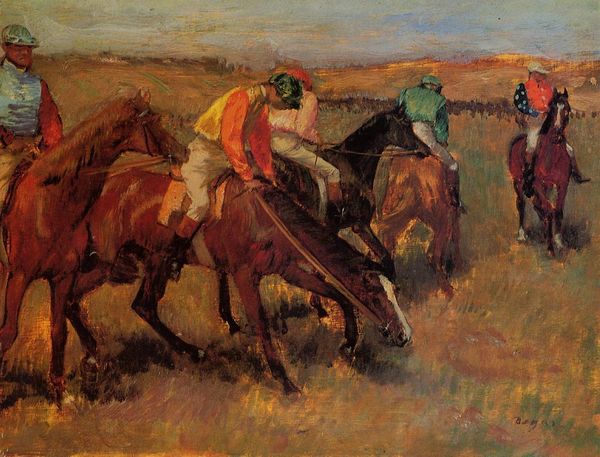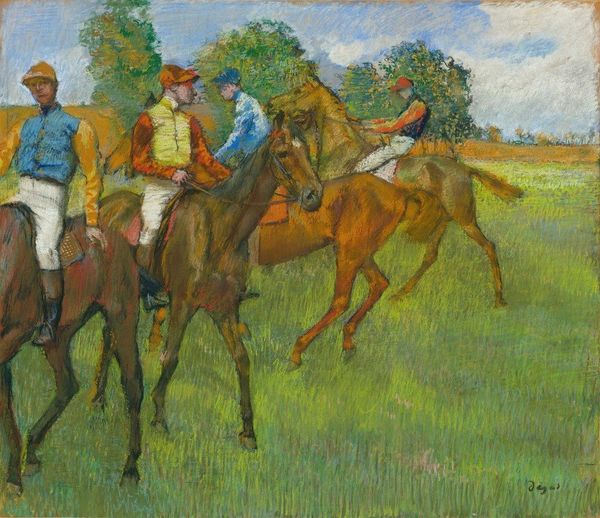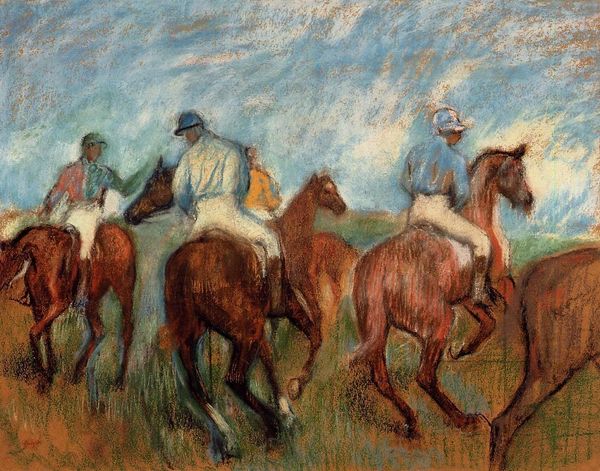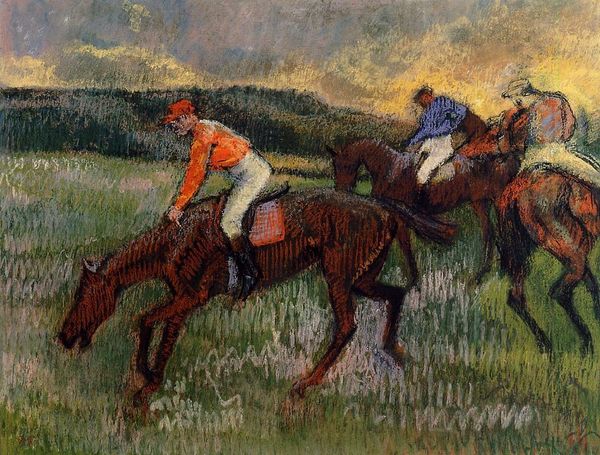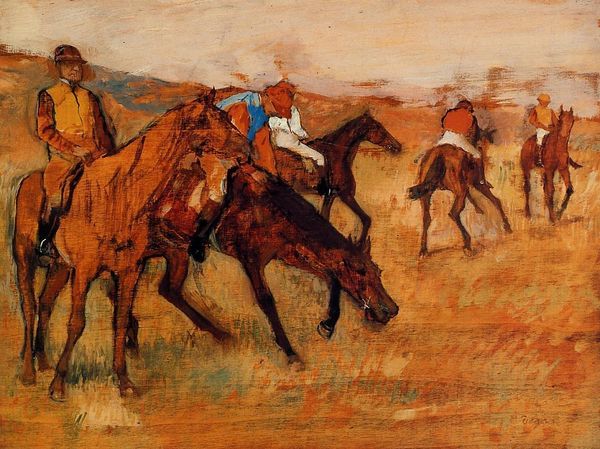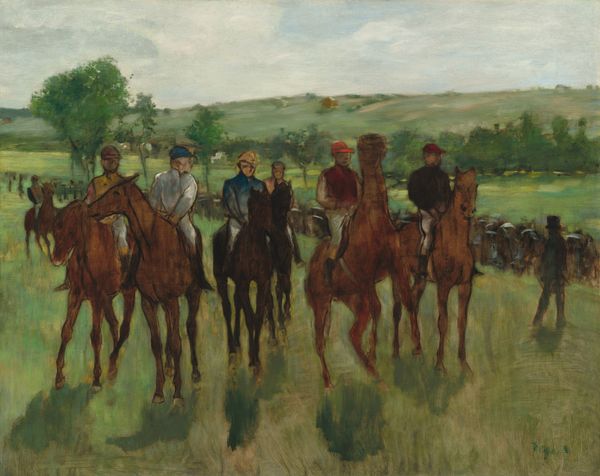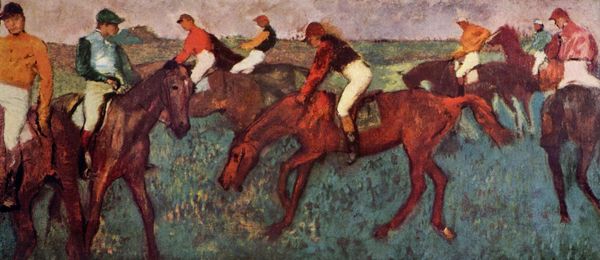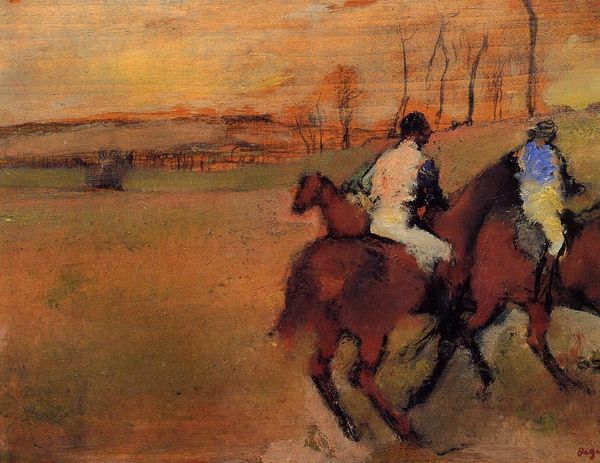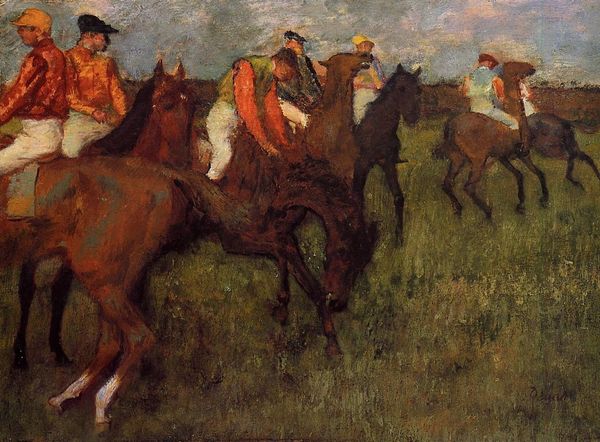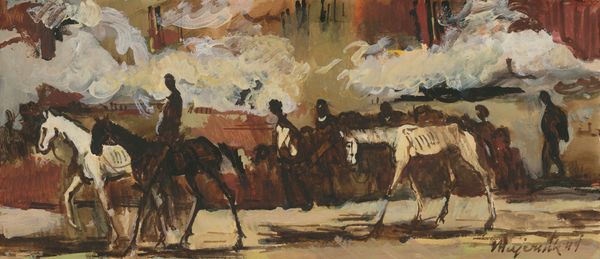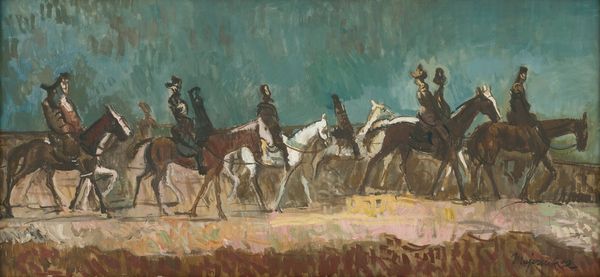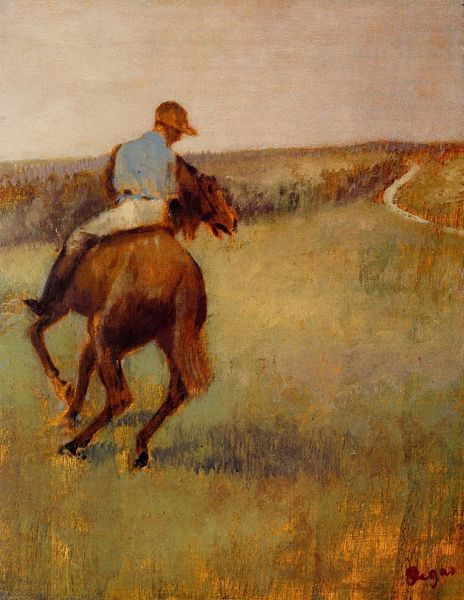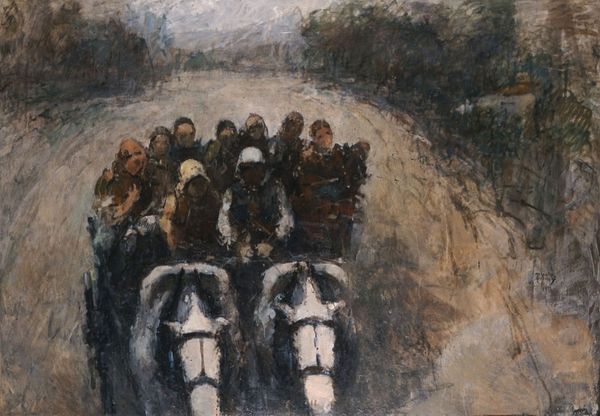
Copyright: Public domain
Curator: Edgar Degas’s “Racehorses,” likely created around 1900, offers a glimpse into the world of equestrian sport. Currently residing at the National Gallery of Canada, it’s rendered in pastel. Editor: It's striking how quickly the scene seems to emerge from the pastel. There's a dreamlike quality to it, a memory maybe. A slightly melancholic stillness, just before the burst of speed and noise. Curator: That evocative quality is characteristic of Degas's style. What fascinates me is his ability to capture movement, the poised energy of the horses and jockeys just before a race. Think about the material conditions though - consider the pastel sticks themselves, their industrial production, and how that enabled Degas to work en plein air, to quickly sketch and refine these studies of modern life. Editor: Absolutely. And the very materiality emphasizes this almost ephemeral quality, like chalk dust – easily smudged, almost temporary, which strangely echoes the fleeting nature of a race. Also, there's something so inherently performative in equestrian events, where animals and humans are harnessed for elite entertainment. It brings forth notions about work, labor, and a capitalist desire for speed and control. Do you see something similar? Curator: Yes, these observations certainly complement his perspective on modern life, on observing and documenting human forms, social interactions, and movements in an elegant and artistic manner. When you look at “Racehorses,” can you not almost sense the anticipation, but the animals seem restrained, controlled…a perfect composition to display the tense balance of industry and entertainment! Editor: That makes me consider this even more, the commercial elements too! Degas's choice of pastels becomes especially compelling when you ponder the accessibility of the medium versus say oil paints for quick production, mass production, as the subject is being controlled through it too...fascinating indeed. Curator: Exactly! It's such a privilege being able to discuss the layers embedded in a piece. Each element speaks volumes, and invites endless questions…and with each reflection, we can observe art under an excitingly different scope. Editor: Yes, these considerations bring to light not only artistic value, but insight into human progress itself – a new experience to embrace.
Comments
No comments
Be the first to comment and join the conversation on the ultimate creative platform.
